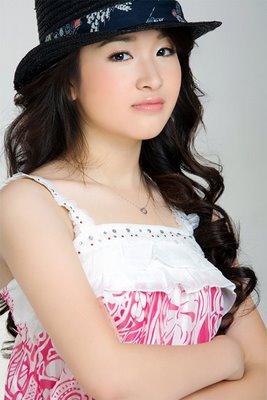Decentralized Autonomous Organizations or simply DAO pertains to an organization that is run through the rules set within smart contracts. In a world full of new technology, the risk of fraud is constantly increasing. In the securities industry, this risk existed long before the use of technology.
What does ICO mean in Cryptocurrency?
An initial coin offering (ICO) is the cryptocurrency industry’s equivalent to an initial public offering (IPO). A company looking to raise money to create a new coin, app, or service launches an ICO as a way to raise funds.
It’s presumed that the people doing the work often have the best ideas about how to improve the processes. As the company grows more sophisticated in its management, delegation, and coaching, the business moves to the village elder phase. Next, organizations move into the tribal clan phase where managers begin to delegate responsibility and coach people to perform. Go to a Bitcoin conference, and you’re likely to meet, among the legions of libertarian hackers, a serious contingent of go-getters who have recently quit jobs in finance. They’re packaging their startups as modules that big banks can buy when blockchains come closer to the mainstream.
If we use more accurate and helpful terminology, we just might build more accurate and helpful technology. I therefore invite you to join me in a slow migration away from the term “DAO”, and try to more specifically hone in on what your smart-contract lead organizations and services are attempting to coordinate. This autonomous organizations ensures we focus on the problem-solving nature of these tools, and don’t get others lost in our oftentimes confusing jargon, blended with our utopian ideals. In fact, all organizations resemble wind-up toys in that they are comprised of component parts — except unlike wind up toys, organizations are made of people.
The agricultural sector suffers from a lack of inclusive financial institutions. Mostly, people rely on local financial bodies to fulfil their business needs. DAO is a unique concept that took a hint from Bitcoin to operate businesses without a hierarchical management system. In layman’s term, its a smart contract running an intelligent algorithm that autonomous organizations can carry out decisions based on the information and without intervention or presence of traditional management. The definition of a company or corporation is tied up in the legal structure. In the case of a C corp, shares are issued and people can hold stock. But the crypto and blockchain industry hasn’t quite made it that far into the legal system.
What do you know about Tao?
[Tao] means a road, path, way; and hence, the way in which one does something; method, doctrine, principle. Chu Tao is ‘the way to be a monarch’, i.e. the art of ruling. Each school of philosophy has its tao, its doctrine of the way in which life should be ordered.
Congress enacted the Securities Act of 1933 to combat the risk of fraud and misrepresentation in the sale of securities. By requiring full disclosure, investors have the opportunity to make informed decisions prior to investing. However, Distributed autonomous organizations (“DAOs”), through the use of blockchains and smart-contracts, engage in the sale of securities without fully disclosing the risks or complying with the registration requirements of the Securities Act of 1933.
What is a dao in Java?
The Data Access Object (DAO) pattern is a structural pattern that allows us to isolate the application/business layer from the persistence layer (usually a relational database, but it could be any other persistence mechanism) using an abstract API.
The viability of its design, however, equally depends on its fully modular task divisibility, the feasibility of the self-selection mechanism, and a rather trivial rewards distribution challenge. Bitcoin’s structure can be fully modular as gains from substitution, splitting, augmenting, or excluding individual tasks seem negligible. Task allocation can rely on self-selection as matching on skill is irrelevant. These latter features, however, result from the very artifact that Bitcoin produces and do not require or preclude the use of the blockchain technology per se. Only jointly, however, will these solutions to the four fundamental problems of organizing render the workings of a “decentralized autonomous organization” viable. The parameter space for these specific combinations of organizational solutions seems limited to me, however, and is severely restricted by the artifacts that the organization seeks to produce.
I agree with the authors that Bitcoin, the blockchain, and DAOs represent a new set of experiments in organizational design and management of complex activities. Studying the emergence, growth, sustainability, and failure of DAOs will offer greater insight into our literature and help us to understand better the changing landscape of knowledge workers and the organizations that support them. However, we should be cautious and skeptical about the mirage offered by many technologies that proport to decentralize. Instead, we should take our analytical toolkit and understand the contingencies under which the promise of decentralization takes hold and the circumstances that lead to even more concentration. My third concern is that the history of technology, particularly those involving network effects, shows that decentralization is often accompanied by centralization simultaneously. The personal computer revolution democratized computing power into the hands of ordinary citizens and workers and yet simultaneously created the Microsoft monopoly. The promise of the decentralized internet with distributed content creation and consumption has come true, yet search has become a significant bottleneck with Google currently acting as a centralized gateway.
Most overarching goals within these organizations don’t align with those of the blockchain traditionalists. Companies want to own their ecosystems and the market verticals built on top of those ecosystems. This makes sense, but it’s tough to find a way to combine that idea with the decentralized ideal of the blockchain.
Should I use DAO or repository?
A DAO allows for a simpler way to get data from storage, hiding the ugly queries. Repository deals with data too and hides queries and all that but, a repository deals with business/domain objects. A repository will use a DAO to get the data from the storage and uses that data to restore a business object.
One example of an autonomous agent that already exists today would be a computer virus; the virus survives by replicating itself from machine to machine without deliberate human action, and exists almost as a biological organism. Daniel Larimer, founder of Bitshare, first coined the term “decentralized autonomous corporation” . The name DAC was later broadened as DAO by Vitalik Buterin , co-founder of Ethereum and Bitcoin Magazine, to include varying forms of blockchain-based organizations.
Governance Challenges Of Blockchain And Decentralized Autonomous Organizations
What Are Dapps? The Best Explanation (decentralized Applications Explained)
These entities often need minimal to zero input into their operation, and they are used to executing smart contracts and recording activity on the blockchain. EOS is a blockchain-based decentralized operating system designed to create, host, and support decentralized autonomous apps. The open source community has also jumped into the DAO game, with several notable projects coming to the fore.
Compliance with the burdensome requirements of registration, however, would destroy this new technology and method of conducting business. To avoid this set-back, Congress must amend the registration requirements to provide an exemption for DAOs. This exemption, although reducing current registration burdens, must still require DAOs to disclose certain information, thereby ensuring investors are informed prior to investing. Furthermore, due to the unique nature of the blockchain, smartcontract, and DAOs, Congress must impose a fiduciary duty on the creators of DAOs to ensure compliance with the disclosure requirements. Further, Congress should consider the allowance of burden-shifting following the initial crowdsale. The conceptual ultimatum of exit, voice, and loyalty figures largely in debates on agency. Decentralized autonomous organizations add the qualification of entrance, meaning that any entity can create, fork, or join the network.
Surprisingly enough, I believe it is the case of Bitcoin—arguably the most prominent blockchain-based venture—that supports my reasoning best. Undoubtedly, its functioning hinges on the autonomous organizations functionality of the ledger and the possibility for individuals to exchange sensitive information in the absence of trust , as the authors neatly showed in their case description.
In these early days of distributed ledgers and tokens secured by cryptographic methods, DAOs remain rare. Some organizers have raised money via initial coin offerings , exchanging tokens for cash. These tokens secure voting and perhaps usage rights for projects that range from explicit to vague. For instance, an ICO can be pledged to the development of a software program. Token buyers may be compensated by low-cost or privileged access to the program as users. They may also have rights to participate revenues earned by the program, and they may be compensated for contributions to the software. Token holders may or may not have voting rights that govern how the software is developed.
Decentralized Organizations
The organization is now engaged in execution and decision-making within the delegated framework and the established autonomous organizations processes. There is an ongoing focus to make incremental improvements in the process to enhance results.
Decentralized Autonomous Organizations
This example covers just a few processes, but would potentially help the keychain merchant save labor costs and time. Employees are needed to keep track of inventory, create and pay bills, scan incoming shipments, and more. A DAO expands upon this example by automating all processes, not just shipping or invoicing, and it does so by stringing together multiple smart contracts in a complex web of ‘if, then’ statements. The final goal is an organization that requires no human input whatsoever and can not only function well but also make thoughtful changes to its structure without prompting.
Bitcoin As Dao
- And, since blockchains spread their data across a network, they also offer the promise of radical transparency.
- The stakes are that much higher than what we’re used to on Facebook.
- Any kind of contract could also reside on a blockchain, written in computer code rather than ordinary legal jargon.
- These “smart” contracts could establish marriages, organizations, even national constitutions — anything you can code.
- Blockchains can be used to send messages or transfer ownership records or store data.
- The contracts would enforce themselves in a pre-determined way, including by automatically removing funds from a party’s account.
Similarly, in social media, Facebook has enabled disparate communities and individuals to connect and share information, yet it has centralized the matching of friends and the connections. Blockchain technology also exhibits network effects, and many of the novel applications being developed require ecosystem coordination ; thus I expect centralization also to emerge. Yet decades of research have explained why organizations arise and persist for reasons that go beyond minimizing transaction costs. Such factors as shared purpose, identity, collective reputation and status, and the ability to habituate pro-social behaviors help explain why organizations endure. Distributed-ledger technologies and tokens that ride on top of it will doubtless make a massive impact on organizations and exchange, and some DAO’s will successfully supplant other ways to solve economic problems, as the authors suggest. Once a dominant design emerges and distributed ledgers become viable substitutes for other database architectures, tokens will also revolutionize the way organizations manage their routines while sustaining useful forms of central control. Bitcoin itself will likely become a historical artifact, but it has opened the door for a flood of organizational innovation that turns out to be far more important than the term “cryptocurrency” would suggest.





